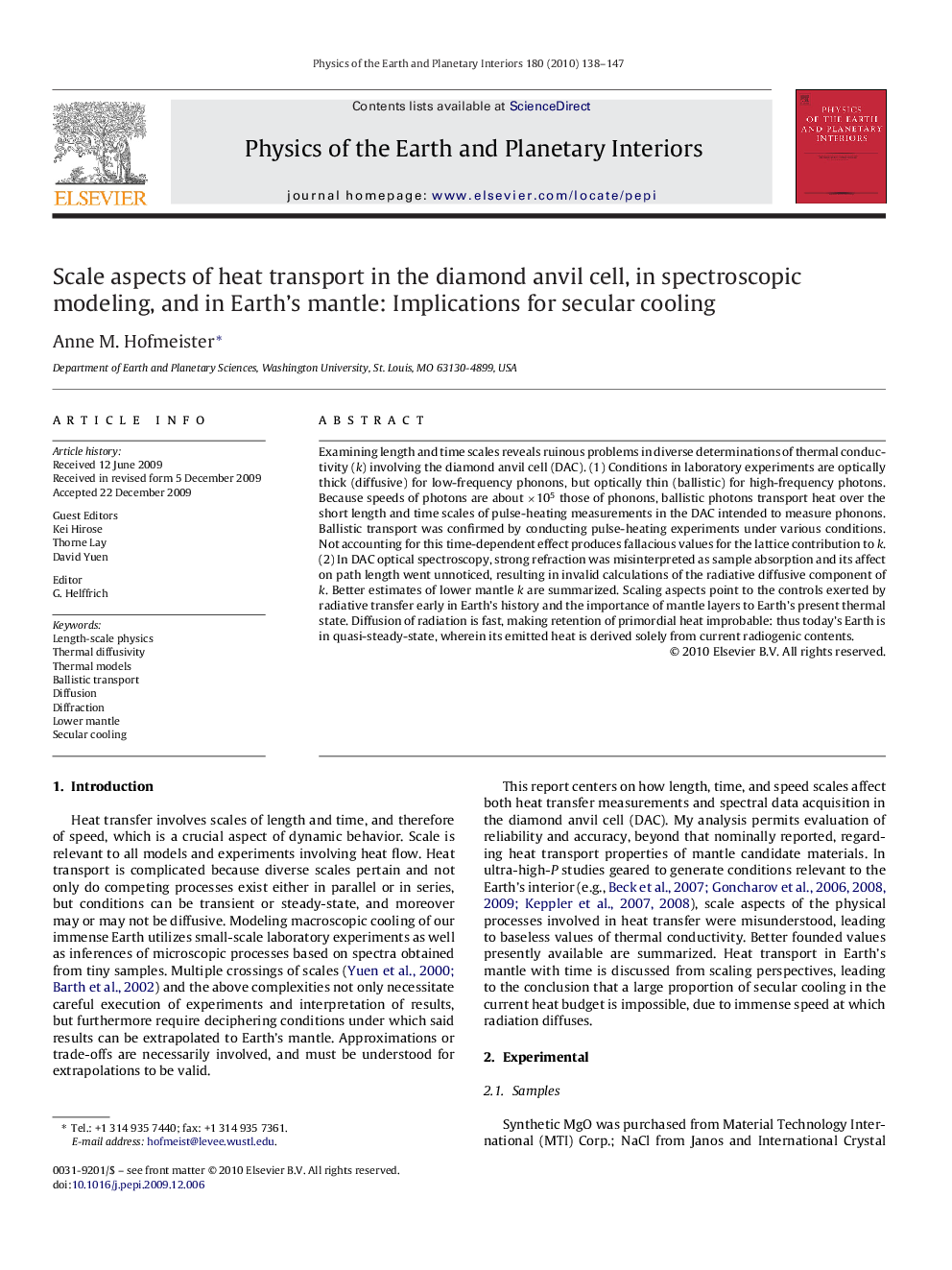| Article ID | Journal | Published Year | Pages | File Type |
|---|---|---|---|---|
| 4742100 | Physics of the Earth and Planetary Interiors | 2010 | 10 Pages |
Abstract
Examining length and time scales reveals ruinous problems in diverse determinations of thermal conductivity (k) involving the diamond anvil cell (DAC). (1) Conditions in laboratory experiments are optically thick (diffusive) for low-frequency phonons, but optically thin (ballistic) for high-frequency photons. Because speeds of photons are about Ã105 those of phonons, ballistic photons transport heat over the short length and time scales of pulse-heating measurements in the DAC intended to measure phonons. Ballistic transport was confirmed by conducting pulse-heating experiments under various conditions. Not accounting for this time-dependent effect produces fallacious values for the lattice contribution to k. (2) In DAC optical spectroscopy, strong refraction was misinterpreted as sample absorption and its affect on path length went unnoticed, resulting in invalid calculations of the radiative diffusive component of k. Better estimates of lower mantle k are summarized. Scaling aspects point to the controls exerted by radiative transfer early in Earth's history and the importance of mantle layers to Earth's present thermal state. Diffusion of radiation is fast, making retention of primordial heat improbable: thus today's Earth is in quasi-steady-state, wherein its emitted heat is derived solely from current radiogenic contents.
Keywords
Related Topics
Physical Sciences and Engineering
Earth and Planetary Sciences
Geophysics
Authors
Anne M. Hofmeister,
